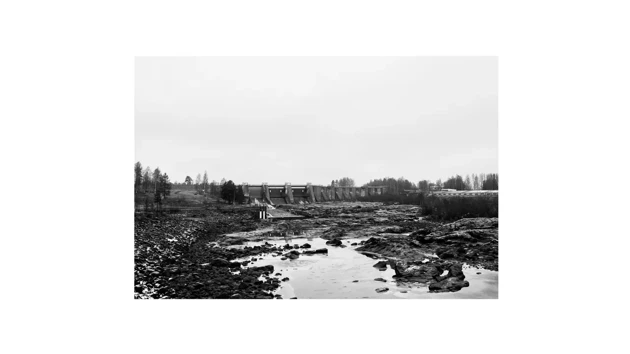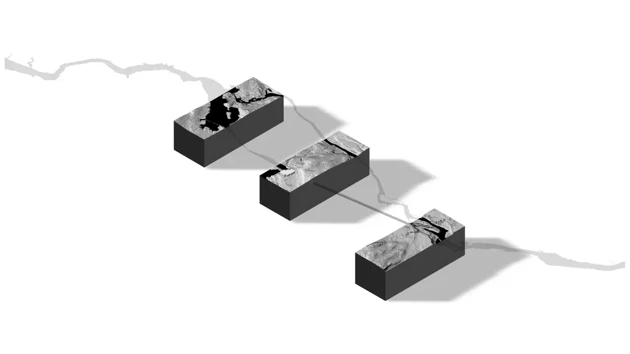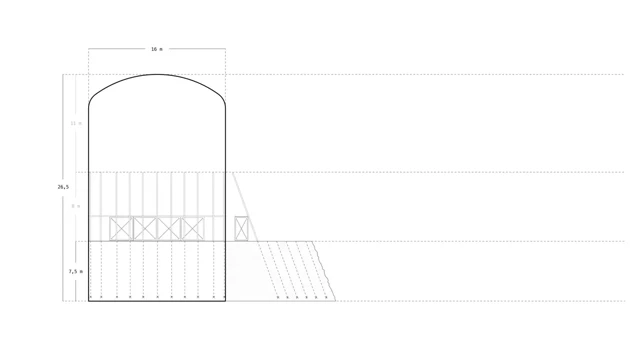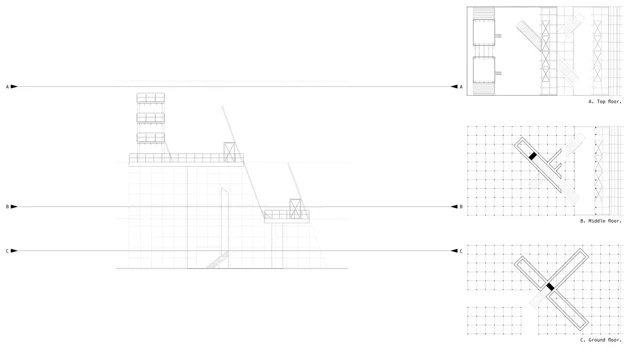The designed structure with the spatial composition departing from the construction sequence of the Stornorrfors underground tunnel.
Infraspheres - Exposing & re-transforming neglected infrastructural territories in northern Sweden
Hydropower development during the early 20th century is directly linked to the industrial development and welfare of Sweden today. As cities expand they require larger energy infrastructure systems to support the needs of everyday life, often located beyond urban centers. This phenomenon triggers a common unawareness of the function, importance and consequences that hydropower infrastructure embodies. By researching the hydropower station Stornorrfors, this project aims to emphasize the scale of a piece of infrastructure that is often forgotten.
Hydropower infrastructure is the largest contributor to energy production in Sweden, composing 43% of the total energy production annually. Since the late 19th century energy production and consumption have steadily increased and the mastering of hydropower has enabled Sweden to industrialize, in turn, and in time increasing the quality of life nationally. The presence of these gigantic infrastructure elements are normally neglected areas, hidden away and intended to serve only as invisible societal engines, therefore there is a lack of awareness and human connection to such resource areas.
Areas in direct proximity to the hydropower station Stornorrfors become completely dominated by these systems of displaced infrastructural networks. A phenomenon known as planetary urbanism. Hydropower is an invasive form of infrastructure where the ecological consequences clearly and quickly translate to cultural and social consequences, disrupting the genius loci and further increasing the distance between the system & the inhabitants. Seeing as urban areas and society at large today are dependent on the infrastructural systems which enable agglomeration and societal development, they are required to stay. However, understanding and encouragement of a deeper connection between resource areas and inhabitants are crucial to building stronger communities and enriching the genius loci.
The Stornorrfors hydropower station was a record-breaking construction in many aspects, and especially notable is the underground outlet tunnel. A significant technological method in rock drilling enabled the construction of the largest tunnel of its kind in the world at its time of construction, measuring 16 meters in width and 26.5 meters in height. By exposing this hidden element of Stornorrfors and creating an interactive structure that departs from the scale and labor of the construction period - it explains the transformation and current state of the areas surrounding an otherwise hidden and neglected resource area.
Studio 12: Man-Made Geographies: From Planetary to Molecular
Studio Teachers: Alejandro Haiek Coll (Studio Coordinator), Johanna Runge, Raffaelle Enrichiello


The regulation dam at Stornorrfors.

Map of the Umeå river overlaid by information of the placement of Stornorrfors and former hydropower stations.

The three nodes of the Stornorrfors hydropower station; (1) the dams (2) the inlet (3) the outlet.

Section drawing of the construction process of the underground tunnel.

The built structure relating to the process of construction of the underground tunnel.





